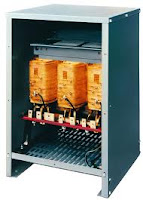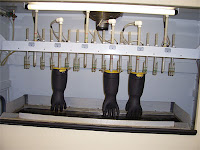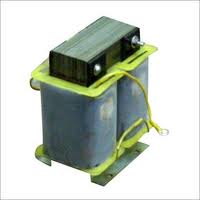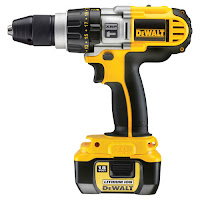The Non Contact High Voltage Indicator is a safety device which indicates with a buzzer sound and flashing light whether a conductor or an equipment is live or not.
 When working with High Voltages, it is extremely important to ensure that we know which equipment is live and which equipment is dead.
When working with High Voltages, it is extremely important to ensure that we know which equipment is live and which equipment is dead.
Too often, engineers and workers are exposed to severe injuries or even death when someone accidentally gets exposed to live conductors or tries to connect a test equipment to a conductor which they thought was dead.
Hence, it is absolutely essential that we ensure that equipment does not have any voltage and is discharged before we begin work.
The Non Contact High voltage indicator works by sensing the electric charge lines emanating from a point at high potential. Since, these lines of electric charge can be detected at a distance from the conductor, contact with the conductor is not necessary. The Non contact high voltage indicators available in the market can be used to detect a wide range of voltage from 80V to nearly 500kV. These indicators are usually powered with alkaline batteries.
Each High voltage detector has a inbuilt test function which tests the device for functionality prior to use.
The Non Contact High Voltage Indicator is held near the live conductor using a hot stick. Gloves of the appropriate rating should be worn when using the equipment.
 When working with High Voltages, it is extremely important to ensure that we know which equipment is live and which equipment is dead.
When working with High Voltages, it is extremely important to ensure that we know which equipment is live and which equipment is dead.Too often, engineers and workers are exposed to severe injuries or even death when someone accidentally gets exposed to live conductors or tries to connect a test equipment to a conductor which they thought was dead.
Hence, it is absolutely essential that we ensure that equipment does not have any voltage and is discharged before we begin work.
The Non Contact High voltage indicator works by sensing the electric charge lines emanating from a point at high potential. Since, these lines of electric charge can be detected at a distance from the conductor, contact with the conductor is not necessary. The Non contact high voltage indicators available in the market can be used to detect a wide range of voltage from 80V to nearly 500kV. These indicators are usually powered with alkaline batteries.
Each High voltage detector has a inbuilt test function which tests the device for functionality prior to use.
The Non Contact High Voltage Indicator is held near the live conductor using a hot stick. Gloves of the appropriate rating should be worn when using the equipment.
















